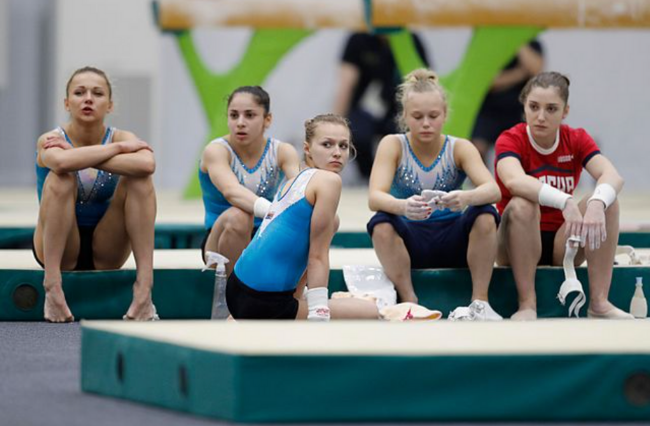Practicing a sport is never an easy task. Some are better than others and no matter how naturally gifted you are, it takes hours of training to become good, and a lot of sweat and tears to become excellent. Now, imaging trying to learn a sport through a screen.
This is the reality for Australian gymnasts. With over 231,200 athletes, 618 clubs and 8,051 coaches in the country, gymnastics ranks third in participation by children under 15 according to the 2019 AusPlay survey. Estimated to have started over 2,500 years ago in ancient Greece, COVID-19 may not be the sport’s first global pandemic, but it is the sports first round of virtual coaching.
Trying to teach young gymnasts the ropes without the proper facilities and equipment has posed a challenge to coaches, who have tried to adapt to the new online training environment. Scott Young, a Men’s Artistic Gymnastics Program Manager and Senior Coach at Eastern Gymnastics Club described how they have tried to overcome some of the physical barriers.
“Normally you’re very hands-on with gymnasts. You put them in particular shapes. You teach them where to send their feet into the air and those kinds of things. At home, doing it through the screen you can’t poke and prod and help them and catch them if they fall,” Young told upstart.
“We give them different exercises to manipulate for what they would usually do at the gym. For example, a box jump becomes a couch jump.”
To deal with issues of safety, Gymnastics Australia assured members of the community that home-based programs would be covered under the National Risk Protection Program (NRPP). However, in order to qualify, coaches and athletes must comply with certain training requirements, which might limit the skills that can be practiced. For example, the Training Athletes During Club Shutdown Fact Sheet bans athletes from performing a salto (something like a flip) if they want coverage.
The sheet also suggests certain at-home and outdoor activities that can help like stretching and flexibility exercises. Alison Dunn, the General Manager of the Eastern Gymnastics Club, talked about some of the benefits of using these recommendations in their training.
“I think [the athletes] flexibility and strength have actually improved if they’ve been coming [to online classes] regularly. Quite often in classes at the gym you need to be concentrating on equipment and stuff like that, and so they don’t do a lot of their flex and strength,” Dunn told upstart.
Young says this approach can be helpful for young gymnasts in the future.
“It’s given them a chance to dial back and really work on their fundamentals and the basics. Now hopefully when they get back to the gym, those are sorted and they can excel with bigger skills,” he said.
Apart from the physical limitations of not having a proper space to train, other challenges have been faced. Trying to schedule students to receive a similar personalised training session to what they are used to and keep them engaged, propelled clubs to shuffle things around.
Young contrasted how before the pandemic he only coached in level-specific groups, whereas now they have introduced general fitness sessions.
“For half an hour, all kids can join. Any age, any equipment that you have at home… And then there’s more specific training to each individual group of about eight to 10 kids at a time,” he said.
“We do a bit of a cardio warm up and go through some different running drills. One of the gymnasts will then lead a flexibility session. I’ll give them a chance to lead the group and talk to their teammates.”
After warm-ups and drill, Young’s students do about 20-30 minutes of skill development.
“We teach them some of the basic handstands and forward rolls, and then to finish off they often do a bit of a strength circuit. They use their couch, they use their cushions, whatever they have, a broomstick.”
While gymnastics can sometimes be seen as an individual sport, its community is one of the most important factors. Dunn said member engagement was the main factor behind the decision of doing online classes and is pleased with how the students have been engaging. The reschedules in timetables have allowed the gymnasts to socialise with peers that would not normally, whilst the coaches have seen confidence growing in the young athletes as the months passed.
As clubs prepare for a staged reopening in Victoria in the next couple of months, coaches worry about preventing injuries, and about the possible gap in skill levels once athletes get back to the gym.
“We’ve been sending programs for them to do if they didn’t want to come online. Some are doing nothing. It’s going to be a big difference when they come back, so it’ll be interesting to see what happens in that space,” Dunn said.
Esther Rubio is a Media and Communication’s exchange student at LaTrobe University. You can follow her on Twitter at @ethrbo
Photo: Rio de Janeiro – Equipe de ginástica artística da Rússia treina no Parque dos Atletas para os Jogos Olímpicos Rio 2016 by Agência Brasil Fotografias available HERE and used under a Creative Commons Attribution. The image has not been modified.






